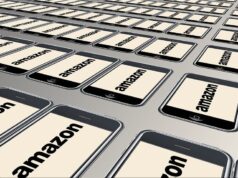Target overcame the challenges of being almost sold to Amazon by:
- Thinking long term: Target invested over $7 billion in a turnaround strategy that included remodeling stores, introducing new brands, and enhancing its digital shopping experience.
- Leveraging its strengths: Target used its physical stores and employees as a fulfillment network for online orders, offering customers various options such as curbside pickup, same-day delivery, and drive-up service.
- Differentiating its products: Target launched several private-label brands that catered to different customer segments and offered high-quality products at affordable prices.
- Improving its customer experience: Target focused on making its stores more attractive, convenient, and engaging for customers, as well as offering personalized recommendations and rewards through its loyalty program.
These moves helped Target increase its revenue, market share, and customer satisfaction, and compete effectively with Amazon and other online retailers.
What is Target’s turnaround strategy?
Target’s turnaround strategy is a plan to revitalize its business by investing in its stores, brands, and digital capabilities. The strategy has four main components:
- Remodeling existing stores and opening smaller ones: Target has remodeled hundreds of its stores to make them more modern, spacious, and appealing. It has also opened over a hundred mini-stores in urban areas and college campuses, where it can reach new customers and offer a curated selection of products.
- Introducing new, private-label brands: Target has launched over 40 new brands in the past few years, covering categories such as clothing, home decor, beauty, and food. These brands offer high-quality products at competitive prices and help Target differentiate itself from other retailers.
- Enhancing its digital shopping experience: Target has invested heavily in its e-commerce operations, making it easier and faster for customers to shop online. It has also integrated its online and offline channels, offering customers various options such as curbside pickup, same-day delivery, and drive-up service.
- Improving its customer experience: Target has focused on making its stores more convenient and engaging for customers, by adding features such as self-checkout kiosks, Starbucks cafes, and Disney shops. It has also improved its loyalty program, offering personalized recommendations and rewards to its members.
Target’s turnaround strategy has helped it achieve strong growth and profitability in recent years, as well as increase its customer satisfaction and loyalty.
Facebook Comments











